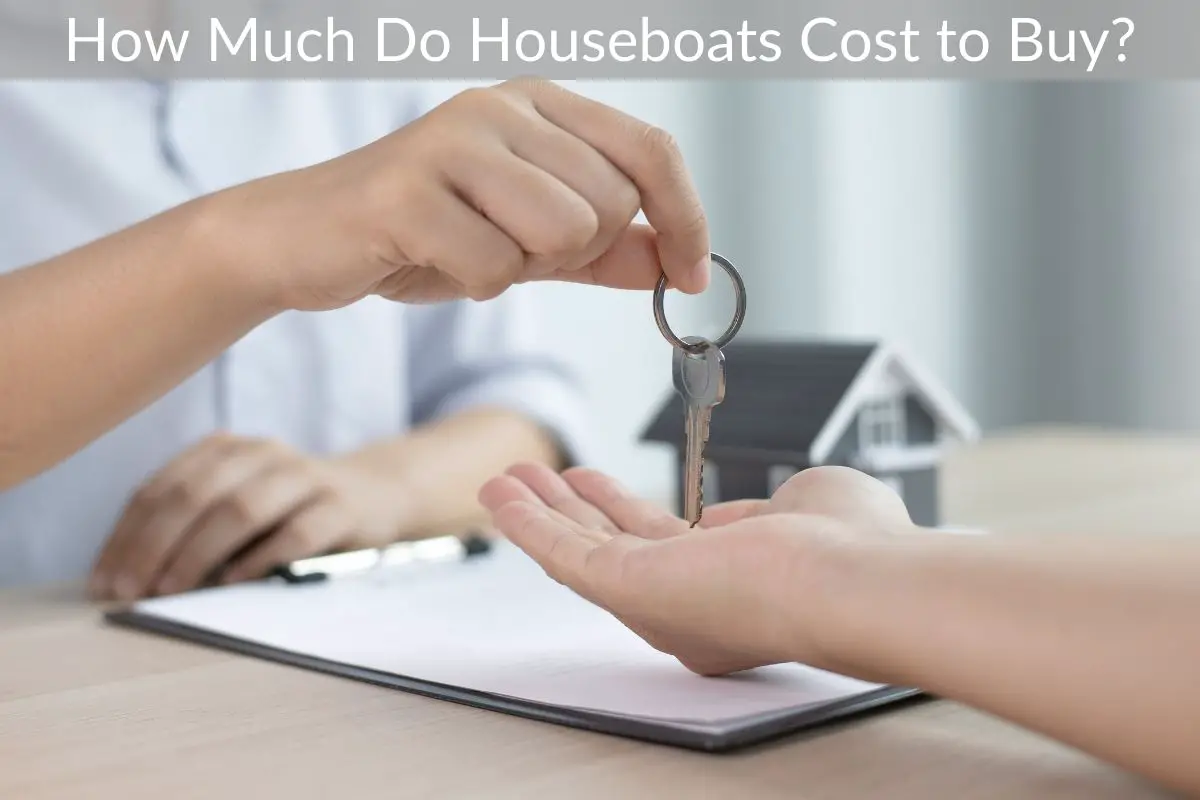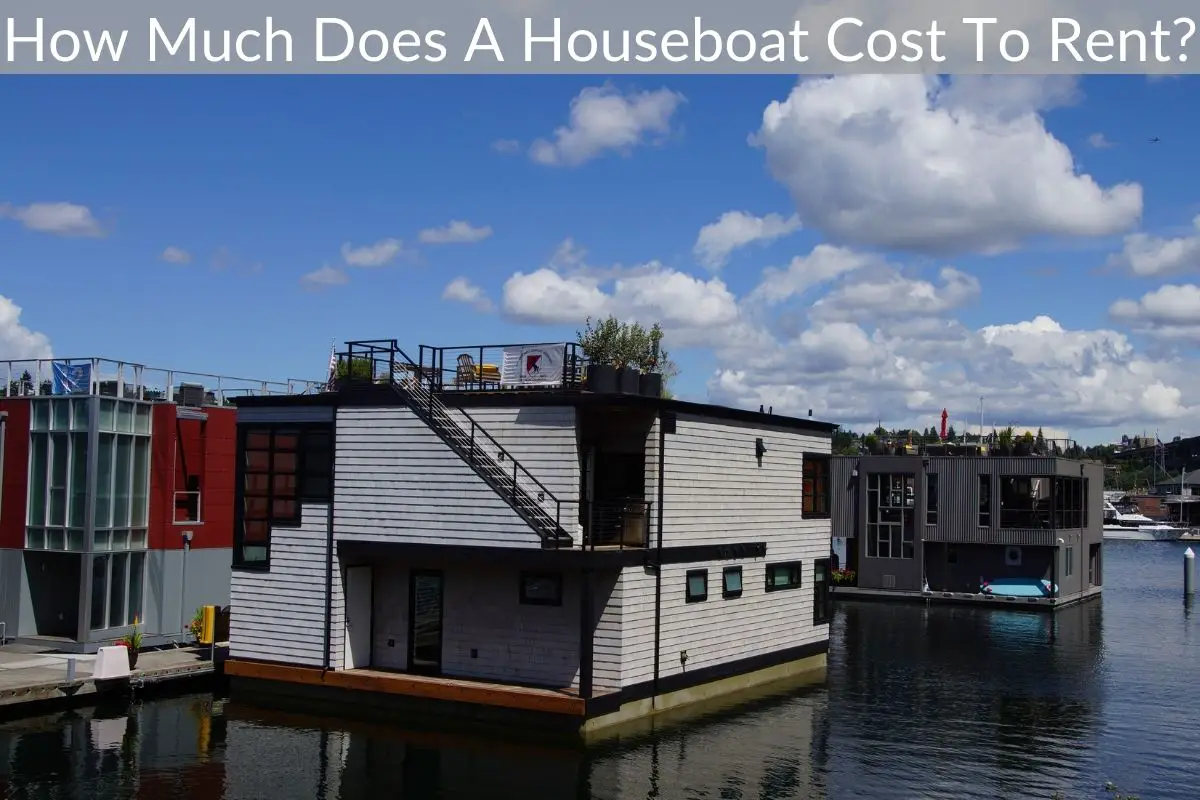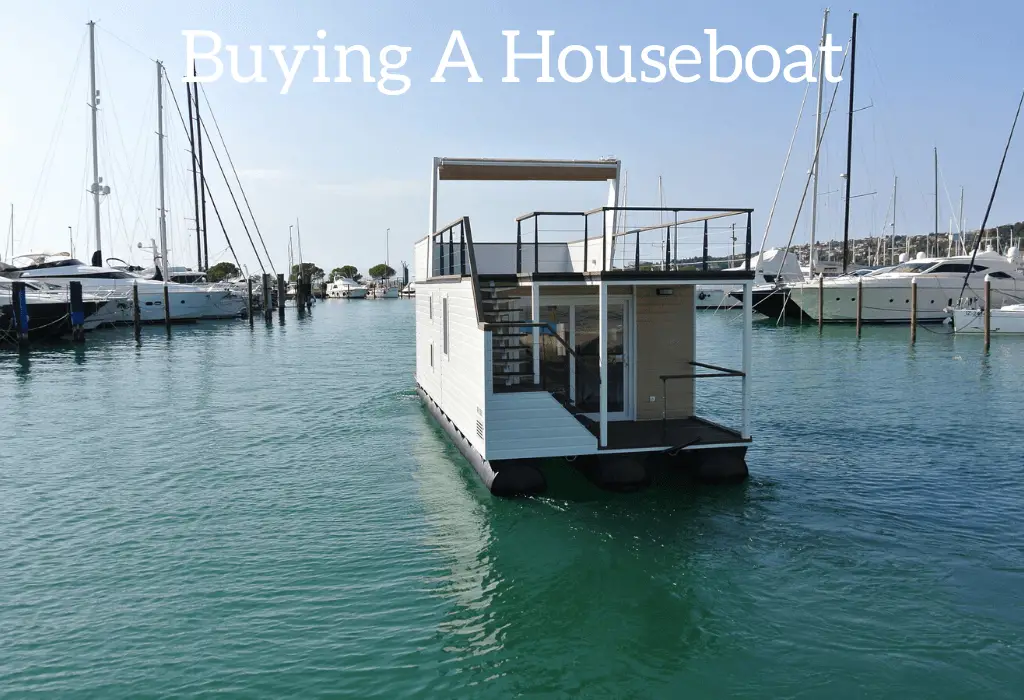There are a variety of different designs and sizes for houseboats so there isn’t one answer for every houseboat. Since houseboats are made by a wide variety of manufacturers and sometimes even built by individuals there is no standard on what is included on every boat.
*This post may contain affiliate links. As an Amazon Associate we earn from qualifying purchases.
Most commonly, yes, there will be at least one bathroom on any houseboat as houseboats are designed to be used to sleep on for an extended period of time. Many people will stay on their houseboat for days or weeks and some people will even live on board so having a normal bathroom is important.
If your houseboat doesn’t have a toilet on board you can of course add one! There are portable marine toilets that you can buy or you can have one installed. With having a toilet on board you do have to have septic tanks on board for the toilet to drain into.
Of course once your tanks are full you will need to empty them somehow. Most marinas will have a pump out service that you can dock by and empty your tanks that way while other marinas will have a boat that floats around and empties the tanks while you are docked. Of course either way you will have to pay every time you empty your tanks.
Some houseboats will have two tanks on board one being gray water and one for black. The tank for gray water will have sinks or showers drain into it while the black water tank is for regular sewage. In many places the grey water tank can be emptied into the water while black of course can not.
If your boat goes into the ocean once you are more than 3 miles away from land surprisingly you can pump the raw sewage overboard as well. It is actually legal to empty your sewage tanks into the ocean since once you are more than 3 miles away from land the sewage will dissipate before reaching land (pretty gross isn’t it!).
Houseboat bathrooms can often be added at a later date if the boat that you purchase doesn’t come equipped with one. It will require tearing open some walls and running water and septic pipes so if you don’t have any plumbing experience it is better to hire a professional to install the plumbing than to do it yourself and end up with some sewage backing up because you didn’t do it correctly.
I personally prefer to have a couple of bathrooms if you have a larger houseboat or if you are going to have a bunch of people on board. If it is just you and your family then one bathroom would probably be plenty as you will just have to take turns using it.
If you want to know more about the way toilets and sewage work on your houseboat you can read all you’ve ever wanted to know (and more) in our article about sewage here.
Houseboats can have bathrooms, but they are not the same as those found in conventional homes. While bathroom fixtures and plumbing may be the same, the sewage in houseboats is stored in a smaller tank. Regular dumping of this tank is required to maintain the boat’s sanitation. For the purpose of avoiding health issues, owners should take care to maintain the bathroom plumbing in their houseboats. Fortunately, houseboat bathrooms are not as difficult to maintain as one might think.
Composting toilets
There are many reasons to install composting toilets in houseboat bathrooms. Composting toilets are safe for rolling and pitching environments and are environmentally friendly. Installing a composting toilet on a houseboat is not difficult. Here are some tips to consider. First, consider the size of the bathroom. Many houseboat bathrooms are small. A composting toilet should be installed in an area where there are limited showers.
Houseboats come with large storage capacities, which make them an ideal choice for houseboat bathrooms. One 5-gallon plastic Homer bucket with a lid can hold about a month’s worth of waste for two people. Once the toilet is full, solid waste can be dumped into the trash or composted in a wishing well compost tower. The composting process does not create a foul odor, and you can clean it just as you would a standard toilet.
The Simploo toilet is one such product. Designed by a boater living on the River Thames, this toilet is priced at around $400. It separates liquids and solids and actively composts through a fan, making it an excellent option for houseboat bathrooms. It does not require any venting or a separate tank, and its compact size means that it doesn’t take up any extra space. Many customers have been happy with its durability and performance.
Most composting toilets are easy to install and maintain. You can choose to purchase a self-contained unit or buy one that has a ventilation fan. This system will eliminate the smells and is easy to maintain. Another option is to use a traditional tank for the compost. Some houseboats even feature a small awning in the bathroom to prevent mosquitoes from penetrating the toilet.
Marine toilets
Most of the time, marine toilets on houseboats include holding tanks that are designed to store wastewater. The waste from these tanks is treated with a liquid chemical, which kills bacteria and odors and maintains sanitation within the toilet. This chemical treatment is only temporary, however. Once you have reached land, you will need to take the wastewater to a licensed treatment facility. If your houseboat is not equipped with a holding tank, you will need to use a pump-out facility in order to dispose of it.
When selecting a marine toilet for a houseboat, there are many considerations to keep in mind. For instance, the toilet must have a capacity to remove all the contents in one flush, it must have a rinsing bowl to prevent staining, and it should be easy to clean. Lastly, the toilet should be easy to maintain, have little noise, and have a minimal water and electrical draw.
There are several different types of marine toilets. Some of them are portable, while others are built-in. Most of these toilets are designed to store sewage until it reaches a shore-based pump-out facility. While the holding tank is the least important element of a marine toilet, it is perhaps the most familiar to landlubbers. However, the most common type of marine toilet is a pump-out toilet, also known as a cassette.
These toilets are commonly located amidships on the boat. A pump and holding tank are close at hand for easy access. A separate portion of the ship houses the incinerator 10. The discharge end of the incinerator is located on an exterior wall, so that the hot gases produced during combustion can be vented outdoors. And because a marine toilet is designed for remote locations, it can be placed anywhere on the boat.
Marine septic system
The sewage from houseboats goes into holding tanks. These tanks hold black water, gray water, and toilet waste. The wastewater from these toilets is treated with chemicals that prevent foul odors. To ensure that this sewage is not discharged overboard, houseboat owners can install a Type I or Type II septic system. These systems are more commonly found on large commercial vessels. If the unit is not working properly, it can result in a fine if the sewage is discharged overboard.
For vessels that exceed 65 feet, a Type 2 marine sanitation unit is the ideal choice. It meets IMO and USCG regulations, but it is important to make sure that you get the correct size and style. The number of people on board will dictate the type of sewage treatment device you purchase. Overloading the system will cause corrosion and impacting, as well as costing you money in maintenance. Ultimately, installing the appropriate system will help keep your houseboat from breaking down.
A common holding tank holds all boat waste and is pumped back to the marina when the houseboat is returned. The capacity of the waste holding tank depends on the type of houseboat. It is important to not overfill the tank. Ideally, the waste holding tank should be at least half full so that it is always emptyable. A tank gauge in the helm will allow you to know the full capacity of the tank. If you fill the tank too full, a warning light will illuminate and alert you to empty it.
While houseboats are not primarily used as a mode of transportation, they do need a sewage holding tank. This is especially important because sewage from houseboats is particularly sensitive to degradation. Besides, houseboats are not the only recreational vessels that need a septic system. This is why houseboat owners need to make sure that they install one to ensure that they are in compliance with the MSD.
Electricity
Houseboat utilities can be surprisingly basic or innovative depending on the type of boat and its moorage. While most houseboats have electrical outlets to hook up to your home’s electric service, some are equipped with large batteries or generators that enable you to use the electric appliances onboard. While most large floating homes are permanently connected to a shore power source, you might have to prioritize the appliances you use the most. In this case, you will have to choose between running the appliances you use the most and running them at the same time.
Many houseboats have onboard generation systems to provide power. They can also connect to shore power, 120-volt AC power provided by marinas. Houseboats may also use rechargeable batteries or solar panels to generate their own electricity. To prevent problems with power outages, houseboat owners should always carry volt and amperage readers. Running water, flushing the electric toilet, and watching satellite television all use electricity. Not having access to electricity can make these activities impossible.
Houseboat owners in Kerala are looking for more environmentally friendly alternatives to relying on shore power. Solar and wind power are two alternatives to using shore power. These alternative sources of power are increasingly popular among houseboat owners. Houseboats can draw electricity from onboard batteries, which are available in many styles and price ranges. The batteries can be recharged either by using shore power or by generating more electricity than it uses. With these alternative energy sources, you can live the luxury of your home while enjoying the beauty of the sea.
The Mothership Houseboat is an eco-friendly alternative for those seeking a luxurious vacation. Its modular design allows it to be customized to suit the needs and budget of its owners. The Mothership Houseboat is equipped with a large solar array that charges its batteries. This system provides enough power for the electric motors and other appliances within. This eco-friendly alternative is incredibly comfortable and environmentally friendly. With a luxurious interior and a convenient location, a Mothership Houseboat is an excellent choice for the discerning traveler.
Storage space
Houseboats often have limited storage space, but with some clever ideas, you can maximize your space and keep everything in their right place. These small houseboats, sometimes referred to as barge canal boats, are narrow and are generally used for leisure purposes. The only thing you can store on houseboats is the most important household items, such as clothes, kitchenware, toiletries, and personal belongings. Often, you’ll only have enough room to store a few boxes, clothes, and kitchen items. Other things, however, can go into another storage unit.
One way to maximize storage space on houseboats is to install streamlined shelving in front of windows. A houseboat’s large windows don’t leave a lot of empty wall space, so a streamlined shelving solution in front of the windows is the best option. Designed to keep items out of sight, black metal shelving can minimize visual clutter and allow light to filter through. While this solution may be more expensive, it can ensure that your items stay safe and dry all year long.
While some houseboats can fit in a standard 20′ x 40′ storage unit, larger boats will require a larger storage space. The height of the boat must be taken into consideration when choosing a storage space. Most storage units are only eight feet high, so make sure you find a storage solution that will accommodate the height of your houseboat. If you have a dry lift or enclosed storage option, you can purchase a suitable cover to keep your boat safe.
Overhead storage is another way to maximize space. Install hooks on the walls to hang things such as essential items. Using hooks on the walls will also give you easy access to items you need while in the water. You’ll be able to quickly grab items, such as towels or essential toiletries, without having to dig through a drawer. Hanging items like these on the wall can also save you a lot of space inside the boat.









